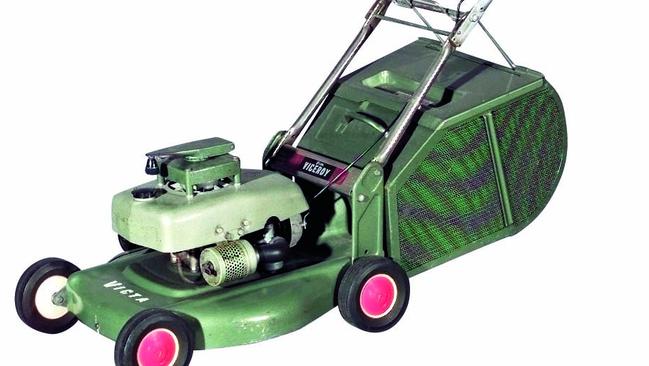Australia’s patent examiners are the original thought police
Got a great, original idea? Australia’s patent examiners will be the judge of that …

Each weekday for the past 25 years, Colin Fitzgibbon has gone fishing. His intended daily catch is old ideas that will disprove the originality of supposedly new ideas. It is a subtle and cerebral way to spend one’s time, but as a patent examiner at IP Australia in the nation’s capital, he is tasked with ensuring that only unique and useful inventions are awarded an Australian patent. Fitzgibbon must be meticulous in his research and documentation, and sure of his arguments. Not only will much of his written work end up on the public record, but more importantly, those who are granted an Australian patent get the exclusive right to exploit and market their invention for up to two decades.
The fisherman wears a blue checked shirt and black trousers. He has silver hair and blue eyes that dance back and forth across two computer monitors as he trawls international patent databases. If an applicant is attempting to claim an existing idea as their own, Fitzgibbon is tasked with reeling in the evidence. “We talk about the ocean of patent applications,” he says. “There’s lots of fish out there. How are we going to find that fish?”
This is not to say he enjoys discovering old ideas that disprove new ones, or delights in dashing the dreams of backyard inventors — a diminishing pool. One notable side-effect of globalisation is that Australian patents now comprise a distinct minority of the ideas assessed by Fitzgibbon and his colleagues. In 2016, IP Australia received 28,394 standard patent applications; 91 per cent of those were filed by non-residents, with US nationals accounting for almost half of the total. Just 2620 applications were submitted by people living in Australia, with the CSIRO, universities and poker machine company Aristocrat among the most frequent domestic hopefuls.
Fitzgibbon, 55, examines mechanical engineering inventions — his areas of expertise are agriculture and lifesaving — but refuses to deal with patent applications that involve weapons or ammunitions on moral grounds. “It’s a good job,” he says as he leans back in his chair. “It’s all about being meticulous, to make sure the applicant gets a patent that nobody else can challenge.” (If somebody disagrees with a patent being granted, they must file a notice of opposition within three months.) “Sometimes you’ll spend a week searching, at the computer seven hours a day, and you can’t find it.” At that point, a patent examiner has to wonder: “Is there something I missed the first time? Is that fish still out there, laughing at me?” says Fitzgibbon. “We’ve got tools, but we’re not perfect. There might be other fish out in the sea, but I’m guessing they’re out in the Indian, not the Pacific — or they’re hiding in the [Mariana] Trench.”

There is nothing new under the sun, or so the saying goes, but anyone who steps inside the ideas factory of IP Australia can only beg to differ. If our nation is in the midst of an ideas boom, as Prime Minister Malcolm Turnbull hopefully suggested when he launched a $1.1 billion innovation package in December 2015, then the individuals who work alongside Fitzgibbon at this organisation can proudly say they have always been surrounded by explosive ingenuity.
Innovation is the lifeblood that courses through the veins of IP Australia. Formerly known as the Patent Office, and still colloquially referred to in those terms, it is entrusted with reviewing inventions pitched by Australians who wish to market them within our borders, and by overseas entities who wish to do the same.
It has been beavering away quietly since 1904, the same year the federal Patents Act came into effect. It’s a cornerstone of our national economy; things simply wouldn’t function without it. Yet, as far as the average Australian is concerned, the patent office does not exist. Out of sight? Out of mind. Perhaps the last time it crossed the national consciousness was via a brief mention in a courtroom scene in The Castle two decades ago.
Based in the aptly named Discovery House in the Canberra suburb of Phillip, it employs 403 patent examiners with technical backgrounds in fields such as physics, electronics or chemistry. The foyer is dominated by a colourful, multi-level banner hailing Australian inventions now used around the world, from ultrasound to the baby safety capsule, black box flight recorder, polymer bank notes and the in-car “race cam” used for broadcasting motorsports on television.
Above the front desk is a big sign that reads: “Every day, without consciously thinking of it, we are surrounded by innovation that forms a part of our daily life.” The words are followed by a timeline of brands and products that stretch from sunrise to sunset: Rexona, Esky, Mortein, Eagle Boys, cask wine. In the opening pages of the 2004 book Imagination: 100 Years of Bright Ideas in Australia, author Matthew Richardson writes: “When we crow about products such as Vegemite, Victa lawnmowers, Hills Hoists and Speedo swimming costumes, we seem to feel some kind of ownership, not just over the pair in the second drawer at home but over the entire product range.”

Encased in glass in a museum adjacent to the foyer is the original drawing of a rotary clothes-hoisting mechanism designed by Adelaide mechanic Lance Hill. Backyard inventions don’t come much more classic than the Hills Hoist, which Hill designed and built for his wife in 1945. She wanted a clothes line that could be cranked up to catch the breeze coming over the fence, and that would turn so she could stand in one place with her laundry basket. Hill did not file the five-page patent for his invention, titled “Improved operating means for clothes hoists”, until August 1954. It was granted in February 1956.
“Your backyard inventor is an idealist,” says Fitzgibbon, eyeballing the museum. “He sees a problem, and he comes up with the solution. You can always tell when there’s been a hailstorm in one of the capital cities, because suddenly we get applications for hail nets that attach to the top of cars. After the firestorms that went through the eastern states, there was a spike in fire prevention [ideas] for rural properties. Unfortunately, we’ve been going for 113 years; the English and American patent offices have been going a lot longer than that.” He lowers his voice to a conspiratorial whisper, and says, “It’s probably been done before.”
However, innovation often happens in increments, and through trial and error. A Thomas Edison quote posted on a wall inside Discovery House notes that, in the process of inventing the light bulb, he also invented 10,000 ways not to make a light bulb. Patience and persistence are prerequisites for any budding inventor.
There are two types of patents available in Australia, the “standard patent”, which lasts for up to 20 years and, since 2001, an “innovation patent” with a maximum term of eight years, which requires a lower threshold for inventiveness, requiring only an “innovative step”. That is, the new idea varies from a previous invention in a way that substantially contributes to the way it works. In both cases, the patent begins on the filing date, rather than when it is granted. There are about 140,000 patents currently in force in Australia, and this financial year about 60 per cent of applications progressed through to acceptance. These days, the Lance Hills of this nation — individuals who submit an idea to IP Australia without engaging the services of a patent attorney to tidy up their submission — are a rarity.
Before the entire process was digitised, there used to be an office “funny file” that was passed between patent examiners for a chuckle during quieter moments. “You do get some weird ones,” says Fitzgibbon. “My wife loved the ‘centrifugal birthing device’ — a granted US patent — where the woman in labour was strapped to a circular table with her legs apart, and a net between her legs. It starts spinning, and with contractions and centrifugal force, the baby comes out and lands in the net. She wouldn’t like to do it,” he laughs, “and I don’t know anybody who would!”
Wedged inside the funny file was an application for a counter-nuclear device with a feline twist. The idea was based on “an orbiting satellite armed with nuclear weapons and detectors that would drop a nuclear bomb on a country when it detected they’d launched a nuclear strike — which is fine,” recalls Fitzgibbon. “Apparently this device could recognise the radiation of the thing taking off, and another aspect was that it could be used on a catflap to recognise the colour of the cat approaching. So it’d open the flap for the appropriate cat, and lock it for the wrong cat. My worry was that if the wrong cat approached the catflap, would the satellite drop a nuclear bomb on it?” He pauses and shakes his head. “That was definitely a backyard inventor.”
There’s the occasional pitch, too, from those who think they’ve cracked the inventor’s holy grail, the perpetual motion machine, which is an impossibility. “Whether [an idea] works is irrelevant,” says Fitzgibbon in the lift heading back up to his office. “We’re just trying to find out if somebody has done it before, or something similar.”

Melissa Wyllie is a 23-year-old University of NSW graduate with a Bachelor of Chemical Engineering who is now engaged in the heady intellectual work of protecting the nation’s collective genius. She started working at IP Australia in February 2016, having spotted a job advertisement that caused her to raise her eyebrows. “I hardly knew about patents,” she says, sitting at her desk in the process engineering section. Wyllie’s technical brain interested her employer the most; everything else could be taught during a qualification program that allows up to two years for new recruits to become patent examiners.
Like Colin Fitzgibbon, she has come to understand that much of her working week is devoted to fishing. An original search can take her more than a week to complete, which includes time spent designing a search strategy with a three-person team that features her senior examiner. International databases such as Google Patents and EPOQUE — the European Patent Office’s voluminous online hub — feature prominently, but the hooks and lures of keywords are crucial to her success. “It’s not that you want to find their invention, but if you do find the exact same thing as they’ve claimed, you know you searched in the right place,” she says, smiling. “You can send a report saying, ‘This has already been done exactly as you claimed’.”
Wyllie is lucky to have snagged a corner cubicle that features two windows overlooking the surrounding suburbs. Pinned to the entrance of her alcove is a selection of ideas she’s encountered in her research that make her laugh; a makeshift funny file, as it were. Her favourite depicts a coconut with a valve, so that the liquid inside can be easily consumed. The applicant was Florida-based Paul dePoo, who filed the application — titled “Resealable spout for selectively accessing coconut water within a coconut” — in August 2011. The patent was granted because it fulfilled the criteria of being novel and useful, as well as demonstrating an inventive step. “It brightens up my day a bit, especially if I’m doing a search and I’m not finding this particular pizza oven, and things are getting dire — then I can look at my funny coconut,” she says, grinning. “I’m sure I’ll come across something amusing in the pizza space.”

At parties, when people learn that she works as a patent examiner, Wyllie often finds herself about to be pitched the next great idea. “The first thing I say is, ‘Don’t tell me, and do not publish this on the internet!’” she says, because putting your idea into the public domain like this torpedoes your chances of getting a patent for it. “Please, if you think you’ve got a great idea, as well as doing a search on Google Patents to make sure it doesn’t already exist, keep it quiet. Don’t tell me your invention. Don’t tell anyone else, preferably, except your attorney.”
What began with four patent examiners in 1904 has since blossomed into a large but efficient public service that quietly powers the national engine of productivity. A colourful poster on a wall near the entrance on level three of Discovery House cheerfully notes that 89 per cent of its customers are either satisfied or highly satisfied, according to a 2016 survey. How many governmental services could match that figure?
Importantly, many of the designs, drawings and descriptions that comprise each invention — dating back to before the Hills Hoist — are freely available to browse on an online database named AusPat. It is here that you can inspect inspiring ideas such as “Fresh Produce Storing Device” (filed in February 2015; patent granted), “Dog Droppings Catcher” (filed December 2015; patent denied as examiner determined it was not novel) and “Device for Massaging Prostate During Sex Act” (filed November 2016, patent granted).
The online publication of these documents is an essential part of the transaction that occurs between a patent applicant and IP Australia. In return for the reward of a patent — a tiny, temporary monopoly in a specific area — the details of each invention are disclosed to the public, so that an inventor of tomorrow might one day go fishing for an existing patent, scratch their chins and think: there’s room for improvement here.



